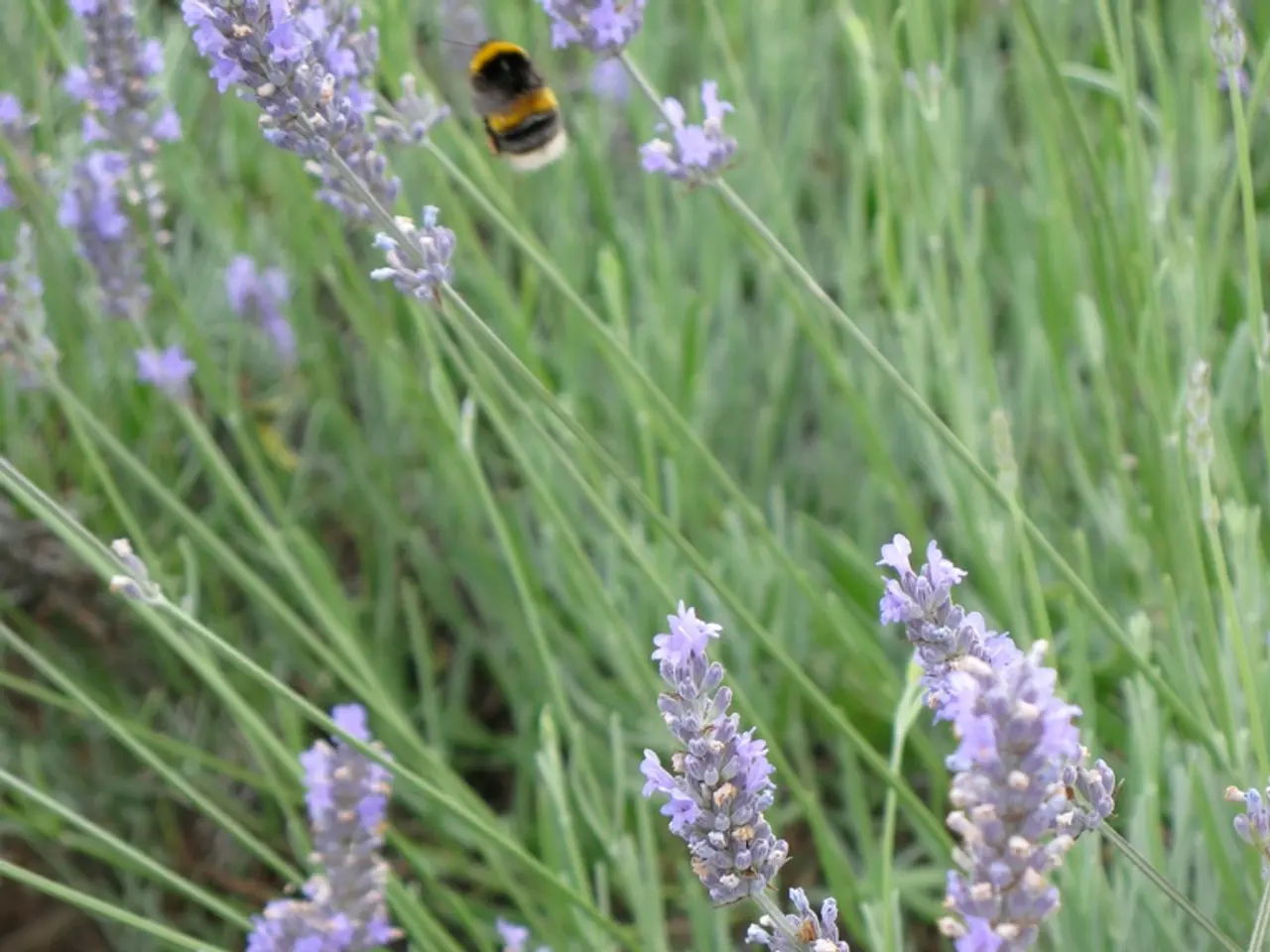Bee Haven Art Installation doubles as a cozy abode for these buzzing visitors.
In the heart of Wakehurst, Kew's wild botanic garden in West Sussex, a unique public art project named "Seed Stories" has taken root. Created by visual artist Kristina Pulejkova, this installation consists of four eye-catching wooden sculptures that function as both artworks and bee hotels [1][2][3].
Each sculpture is crafted from sustainable materials, with untreated marine ply and aromatic cedar chosen for their natural antifungal properties and environmental compatibility [1]. This design ensures a safe and comfortable habitat for bees, especially during the hot summer months.
The installation plays a pivotal role in supporting pollinator conservation, providing refuge and nesting opportunities for bees whose natural habitats are dwindling due to environmental changes [1]. Researchers at Wakehurst can also collect pollen left behind in the hotels, aiding studies on which bee species are attracted to different types of trees and tracking pollinator activity [1].
The design of "Seed Stories" is inspired by the Millennium Seed Bank's collection at Wakehurst. To avoid distractions for the bees, reds and greens are avoided in the sculptures' design, while blues, yellows, and violets, favourable to the bees' visual spectrum, are favoured [1]. The color palette and the entrance holes in the pollinator hotels are based on bee preferences, contributing to a scientifically informed approach [1].
The AR experience in "Seed Stories" offers interactive educational stories about specific seeds from the Millennium Seed Bank, further enhancing the project's educational and conservation value [1]. Dr. Janine Griffiths-Lee, who leads the "Trees for Bees" habitat restoration initiative, collaborated on the creation of "Seed Stories," underscoring its importance in contributing to broader conservation efforts at Wakehurst [1].
By merging art, science, and conservation, "Seed Stories" provides a practical and innovative approach to supporting biodiversity in the UK, with the aim of contributing to pollinator conservation and helping scientists better understand the delicate relationships between pollinators and plants. [1]
[1] Source: https://www.kew.org/press-office/press-releases/kews-seed-stories-sculptures-help-bees-and-support-conservation-efforts-at-wakehurst [2] Source: https://www.theguardian.com/artanddesign/2021/jul/23/kews-seed-stories-sculptures-help-bees-and-support-conservation-efforts-at-wakehurst [3] Source: https://www.independent.co.uk/arts-entertainment/art/news/kew-gardens-art-installation-seed-stories-west-sussex-bee-hotels-b920750.html
- The design of the "Seed Stories" installation at Wakehurst is inspired by the Millennium Seed Bank, taking a scientifically informed approach, using colors and materials favorable to bees.
- The educational value of "Seed Stories" is further enhanced through an AR experience that offers interactive stories about specific seeds from the Millennium Seed Bank.
- By supporting pollinator conservation, providing refuge for bees, and contributing to the study of pollinators and plants, "Seed Stories" serves as an example of how art, science, education, and self-development can come together to promote events surrounding learning and nature conservation.




